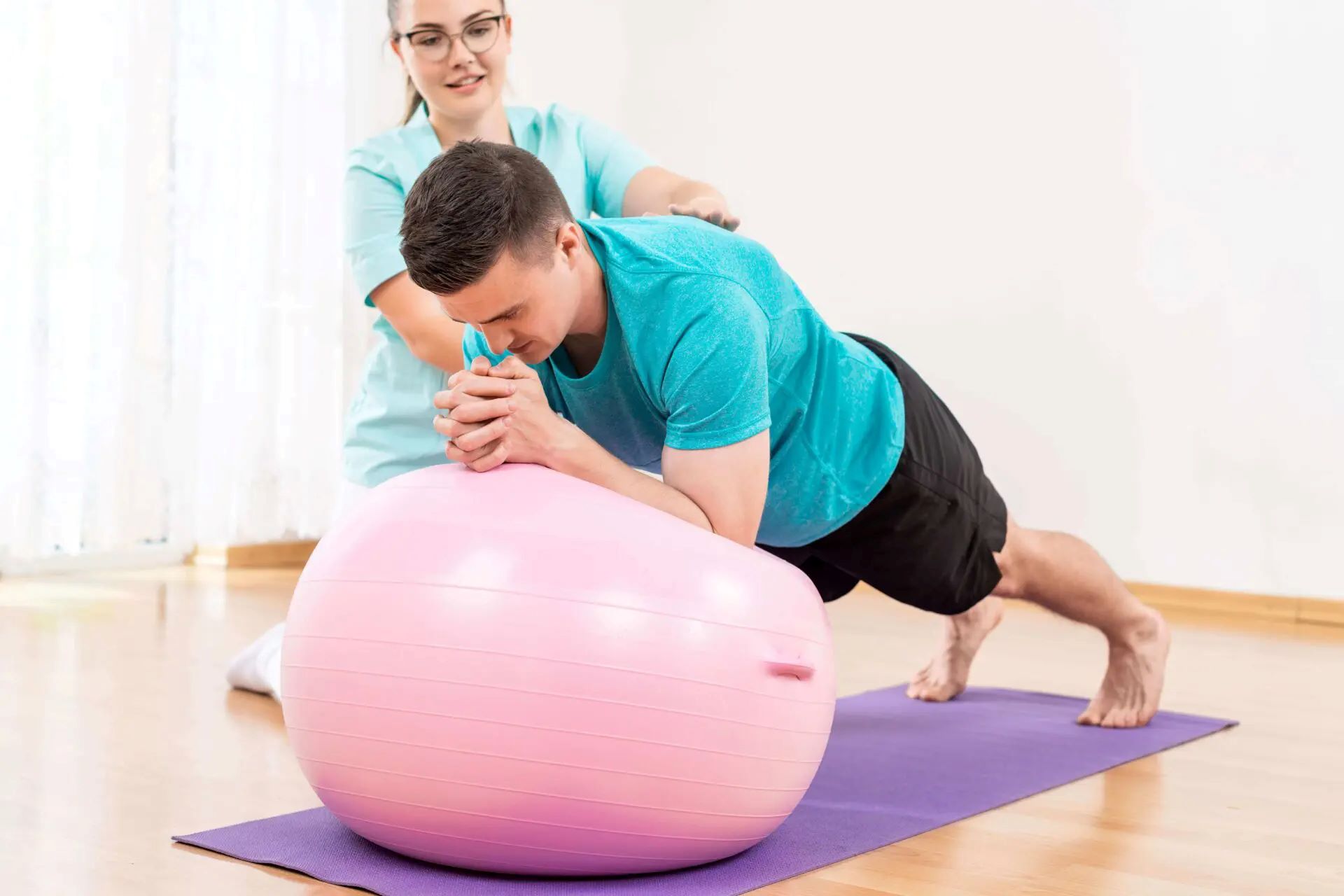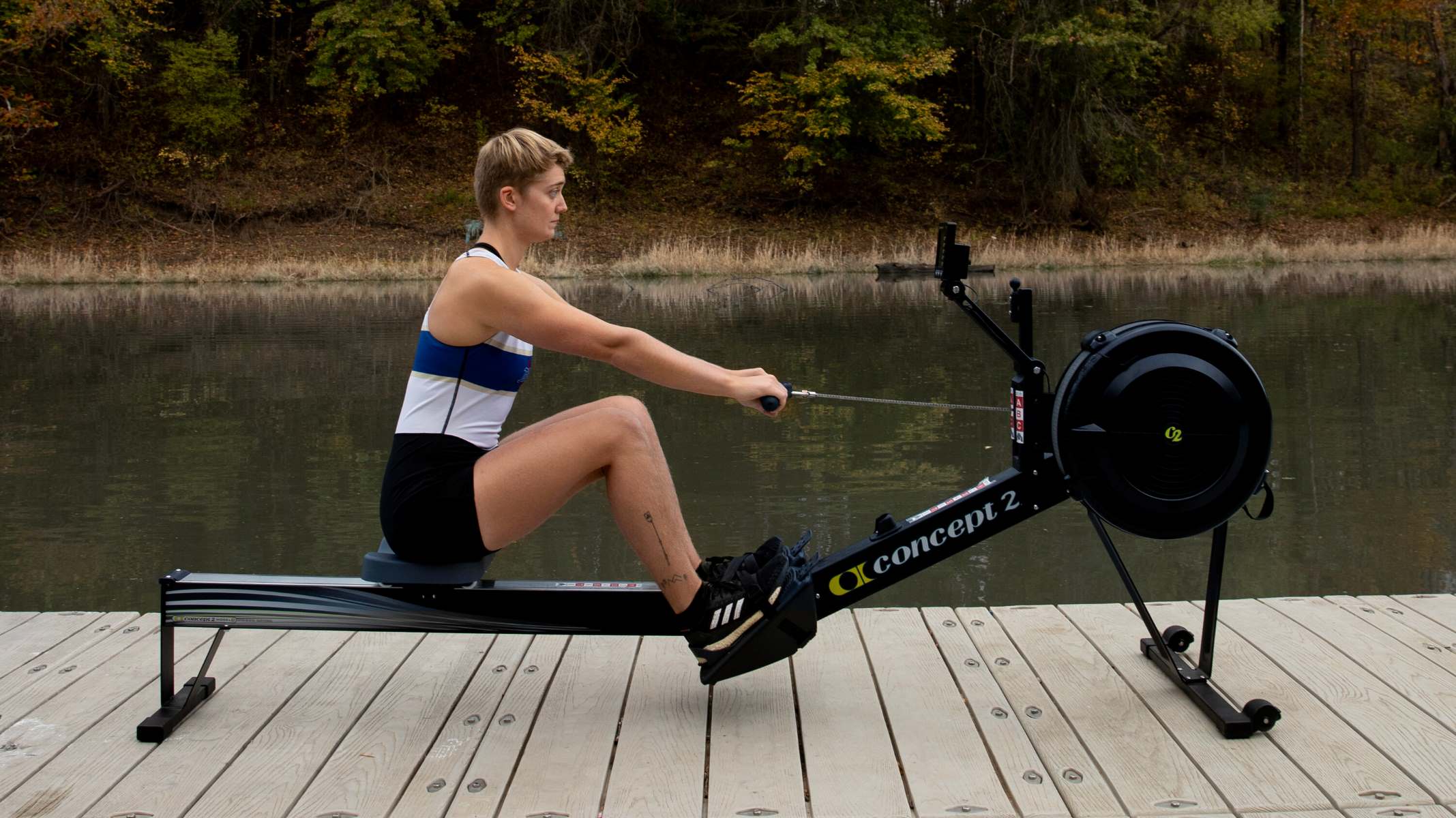

Featured
How Long Should An Abs Workout Be
Modified: August 19, 2023
Discover the ideal length for an abs workout. From quick routines to longer sessions, find out how featured exercises can help you sculpt your core effectively.
Introduction
Welcome to the world of abdominal workouts! Whether you’re aiming for a sculpted six-pack or just looking to strengthen your core, incorporating abs exercises into your fitness routine is essential. But how long should an abs workout be? Is there an optimal duration for maximum results? In this article, we’ll explore the importance of abs workouts, factors to consider, and provide recommendations on the ideal duration.
Hundreds of muscles support our body’s movements, and the abdominal muscles play a crucial role in providing stability and strength to our core. A strong core not only improves posture but also enhances athletic performance and reduces the risk of injury.
While regular cardiovascular exercises and strength training are vital components of any well-rounded fitness regimen, dedicated abs workouts target the muscles in the abdominal region more effectively. They help to tone the rectus abdominis, external and internal obliques, and transverse abdominis.
Now, as you begin your journey towards achieving your dream abs, it is important to understand that the length of your abs workout is not the sole determining factor for success. Various elements come into play, such as your fitness level, goals, exercise intensity, and overall timetable.
Additionally, individual factors such as your body’s response to exercises and recovery rate can influence the duration of your abs workout. It’s crucial to listen to your body, gradually increase the intensity and duration of your workouts, and make adjustments as necessary.
Next, we’ll delve into some key factors to consider while determining the optimal duration for your abs workouts.
Importance of an Abs Workout
An effective abs workout provides numerous benefits beyond just a toned midsection. Here are some key reasons why incorporating an abs routine into your fitness regimen is crucial:
- Core Strength: The abdominal muscles serve as the foundation for overall body strength and stability. Strengthening your core improves balance and enhances performance in other activities such as lifting weights, running, or playing sports.
- Improved Posture: Weak abdominal muscles often lead to poor posture. Regularly targeting the abs can help correct imbalances and promote proper alignment, reducing the risk of back pain and spinal issues.
- Enhanced Athletic Performance: A strong core is essential for athletes and fitness enthusiasts alike. It allows for better transfer of energy between the upper and lower body, improving speed, agility, and overall performance.
- Injury Prevention: Weak abs can increase the risk of injuries, particularly in the lower back. Strengthening the core muscles helps stabilize the spine, reducing the strain on the back during physical activities.
- Functional Fitness: Strong abdominal muscles are vital for everyday tasks such as lifting objects, bending, and twisting. A well-developed core allows for greater ease and efficiency in performing these movements.
- Aesthetic Appeal: Let’s face it – toned abs are a desirable physical attribute. Regularly engaging in abs exercises can help sculpt the muscles in this area, contributing to a lean and defined midsection.
Given these benefits, it’s clear that an abs workout is an essential component of achieving overall strength, fitness, and a visually appealing physique.
Now that we understand the importance of an abs workout, let’s delve into the factors you should consider when determining the duration of your abs training sessions.
Factors to Consider
When deciding on the duration of your abs workout, it’s vital to take various factors into account. Here are some key considerations:
- Fitness Level: If you’re just starting your fitness journey, it’s important to begin with shorter abs workouts and gradually increase the duration as your strength and endurance improve. Those with a higher fitness level may be able to handle longer workouts from the start.
- Goals: Your specific fitness goals play a significant role in determining how long your abs workouts should be. If you’re primarily focused on strengthening your core for functional movements, shorter workouts may be sufficient. However, if you’re aiming for highly defined abs, longer and more intense sessions may be necessary.
- Time Availability: Consider your schedule and how much time you can realistically dedicate to your workouts. It’s better to have shorter, consistent sessions rather than sporadic, lengthy ones. If you can only spare 10-15 minutes a day, you can still achieve effective results with targeted exercises.
- Exercise Intensity: The intensity of your abs exercises also impacts the duration of your workout. High-intensity exercises or incorporating weighted resistance may require shorter workouts to avoid overexertion and maintain proper form.
- Overall Training Program: Take into account your complete training program and how abs workouts fit into it. If you have other strength training or cardiovascular exercises in your routine, you may need to adjust the length of your abs workouts accordingly to avoid overtraining.
Remember, there is no one-size-fits-all answer when it comes to determining the duration of your abs workout. It’s crucial to listen to your body, be mindful of your goals and abilities, and make adjustments as needed.
Next, let’s explore some recommended durations for both short and long abs workouts to guide you in creating an effective routine.
Recommended Duration
When it comes to the duration of your abs workouts, it’s important to strike a balance between effectiveness and feasibility. Here are some general recommendations for both short and long abs training sessions:
Short Abs Workouts:
Short abs workouts typically range from 10 to 20 minutes and are ideal for individuals with time constraints or those looking to target their core efficiently. These workouts focus on high-intensity exercises that engage multiple muscle groups simultaneously. The key is to perform each exercise with precision and intensity to maximize the impact.
Sample short abs workout:
- Plank: Hold for 30 seconds
- Bicycle Crunches: Perform 3 sets of 15 reps
- Mountain Climbers: Perform 3 sets of 10 reps per side
- Russian Twists: Perform 3 sets of 20 reps
Long Abs Workouts:
Long abs workouts are recommended for individuals who have more time available and want to focus on sculpting their abs with a variety of exercises. These workouts typically range from 30 to 60 minutes and involve a combination of strength training exercises, isolation exercises, and core stability exercises. It’s important to maintain proper form and avoid rushing through the movements.
Sample long abs workout:
- Plank: Hold for 60 seconds
- Leg Raises: Perform 4 sets of 12 reps
- Crunches: Perform 3 sets of 20 reps
- Russian Twists: Perform 3 sets of 15 reps per side
- Reverse Crunches: Perform 3 sets of 12 reps
- Dragon Flag: Perform 3 sets of 8 reps
Remember, these are just examples, and you can tailor your workout to suit your preferences and abilities. It’s crucial to warm up before each session and cool down afterward to prevent injuries and aid in recovery.
Now that you have an idea of the recommended durations for short and long workouts, let’s explore some tips for effective abs training.
Short Abs Workouts
If you have limited time but still want to work on your abs, short workouts can be highly effective. These workouts typically range from 10 to 20 minutes and focus on high-intensity exercises that engage your core muscles efficiently. Here are some tips to make the most out of your short abs workouts:
- Select Compound Exercises: Choose exercises that target multiple muscle groups simultaneously, such as planks, mountain climbers, or burpees. These compound movements engage not only your abs but also your shoulders, arms, and legs, maximizing the overall calorie burn and muscle activation.
- Incorporate Intervals: Add intervals of high-intensity exercises to boost your heart rate and work up a sweat. For example, perform 20 seconds of intense bicycle crunches, followed by 10 seconds of rest, and repeat for multiple rounds. This interval training increases the metabolic demand, leading to more efficient fat burning.
- Keep Rest Periods Short: Minimize rest periods between exercises to maintain the intensity of your workout. Aim for no more than 30 seconds of rest between sets to keep your heart rate elevated and maximize the calorie burn.
- Focus on Form: Proper form is crucial for effective and safe workouts. Take the time to understand the correct technique for each exercise and focus on maintaining proper alignment and engaging your core muscles throughout the movements.
- Vary Your Exercises: Keep your workouts interesting and prevent plateauing by incorporating a variety of exercises. Mix and match different moves, such as bicycle crunches, Russian twists, flutter kicks, and side planks, to target different areas of your abs and challenge your muscles in new ways.
- Progress Over Time: As you become more comfortable with the exercises, gradually increase the intensity and difficulty to continue making progress. This can include adding resistance, increasing the number of repetitions, or decreasing rest periods.
Remember to listen to your body and modify exercises as needed. If any movement causes pain or discomfort, consult with a fitness professional or healthcare provider.
Short abs workouts can be a great option for those with busy schedules or anyone looking to supplement their overall fitness routine. With focus and intensity, you can effectively strengthen and sculpt your abs in a short amount of time.
Now, let’s move on to the benefits of longer abs workouts and how to make the most out of them.
Long Abs Workouts
If you have the luxury of more time and want to focus on sculpting your abs with a variety of exercises, long abs workouts can be extremely beneficial. These workouts typically range from 30 to 60 minutes and allow for a more comprehensive approach to targeting your core muscles. Here are some tips to make the most out of your long abs workouts:
- Incorporate a Mix of Exercises: Include a combination of exercises that target different areas of your abs, including the upper abs, lower abs, obliques, and deep core muscles. This can include exercises such as crunches, leg raises, Russian twists, planks, and bicycles.
- Add Resistance Training: To challenge your abs further, incorporate resistance training into your workout. You can use weighted medicine balls, resistance bands, or even dumbbells to provide additional resistance and intensity to your exercises.
- Focus on Isolation Exercises: While compound exercises are effective, be sure to also include isolation exercises that specifically target the abs, such as reverse crunches, dragon flags, or hanging leg raises. These exercises can help create more definition and strength in the individual muscle groups of your core.
- Engage in Core Stability Training: In addition to traditional abs exercises, include movements that challenge your core stability. This can involve utilizing tools like stability balls, bosu balls, or balance boards to engage your core muscles even further during exercises like planks, mountain climbers, or kneeling torso twists.
- Monitor Rest Periods: Since long workouts can be more demanding, it’s important to allow adequate rest periods between sets and exercises to avoid fatigue and maintain proper form. Aim for 45 to 60 seconds of rest between exercises to give your muscles sufficient recovery time.
- Progress Gradually: As with any workout routine, it’s crucial to progressively increase the difficulty of your exercises over time. This can involve increasing the weight, the number of repetitions, or adding more challenging variations to continue stimulating your muscles and promoting growth.
- Stay Consistent: Consistency is key when it comes to long abs workouts. Aim to perform these workouts 2 to 3 times a week, allowing for adequate rest and recovery between sessions.
Remember to listen to your body and adjust the intensity or difficulty of the exercises as needed. It’s important to maintain proper form and avoid overexertion to prevent injury.
Long abs workouts provide an opportunity to extensively target and strengthen your core muscles. By incorporating a variety of exercises and gradually increasing the intensity, you’ll be on your way to achieving a stronger and more defined midsection.
Now, let’s move on to some tips for effective abs training that can apply to both short and long workouts.
Tips for Effective Abs Training
Whether you’re engaging in short or long abs workouts, following these tips will help you get the most out of your training sessions and maximize your results:
- Focus on Mind-Muscle Connection: Mindfully engage your abs during each exercise by consciously contracting the muscles. This connection improves muscle activation and ensures you’re effectively targeting the intended muscle groups.
- Breathe Properly: Maintain a steady breathing pattern throughout your workout. Exhale when exerting force during each repetition and inhale during the recovery phase. This allows for better oxygenation and enhances exercise efficiency.
- Pay Attention to Form: Proper form is crucial to prevent injuries and engage the targeted muscles effectively. Focus on maintaining proper alignment, avoiding excessive swinging or momentum, and move through each exercise with deliberate and controlled movements.
- Gradually Increase Intensity: As your abs grow stronger, challenge yourself by progressively increasing the intensity of your workouts. This can involve adding more repetitions, increasing resistance, or trying more advanced variations of exercises.
- Include Rest Days: Allow your abs muscles adequate time to recover and rebuild. Incorporate rest days between your abs workouts to give your muscles the chance to repair and grow stronger.
- Stay Hydrated: Proper hydration is essential for optimal muscle function and overall performance. Drink enough water, especially during your workouts, to keep your muscles hydrated and to aid in recovery.
- Combine with Full-Body Workouts: While targeting your abs is important, remember to incorporate full-body workouts into your routine. This ensures overall muscle balance and promotes functional strength throughout your body.
- Maintain a Healthy Diet: Getting visible abs requires a balanced diet that supports fat loss and muscle development. Focus on whole, nutrient-dense foods, and be mindful of your calorie intake to achieve a lean physique.
- Stay Consistent: Consistency is key when it comes to abs training. Make it a regular part of your fitness routine, and stay committed to your workouts to see long-term results.
Remember, each person’s journey towards strong and defined abs may look different. It’s essential to listen to your body, adjust your workouts according to your fitness level, and be patient with the process. With dedication and consistency, you’ll be well on your way to achieving your desired results.
Now, you have a solid understanding of the important factors to consider and the recommended durations for your abs workouts. Apply these tips to create a personalized routine that suits your goals, preferences, and schedule.
Conclusion
Congratulations! You now have a comprehensive understanding of how long your abs workouts should be and the factors to consider when determining the optimal duration. Remember, there is no one-size-fits-all answer, and it’s essential to tailor your workouts to your individual fitness level, goals, and time availability.
Whether you choose to incorporate short abs workouts of 10-20 minutes or longer workouts ranging from 30-60 minutes, the key is consistency and effort. Make sure to select exercises that target your abs effectively, gradually increase the intensity over time, and focus on maintaining proper form.
Short abs workouts are great for individuals with time constraints or those looking to efficiently target their core. Incorporating compound exercises, intervals, and focusing on form will help you make the most out of these sessions.
On the other hand, long abs workouts provide an opportunity for broader engagement of your core muscles. By including a mix of exercises, adding resistance, and focusing on isolation and stability movements, you can effectively sculpt and strengthen your abs.
Remember to listen to your body, monitor rest periods, and progressively increase the intensity of your workouts. Combine your abs training with overall full-body workouts, maintain a healthy diet, and prioritize rest and recovery to maximize your results.
Regardless of the duration you choose, consistency and dedication are key. Stay committed to your abs training routine and enjoy the journey towards a stronger, more defined core. With patience and persistence, you will achieve your fitness goals and develop the well-sculpted abs you desire.
Now, it’s time to get started with your abs workouts and embark on the path to a stronger and more defined midsection!









